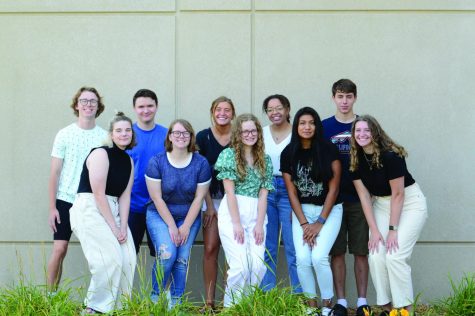Editorial: Schools should teach all American history, not just white history
November 4, 2020
With November marking Native American Heritage Month across the country, it’s important to look back on how little the history of our Indigenous peoples is represented in America today.
Our knowledge of Indigenous history comes first in elementary school. Already, the history of colonial interactions with Indigenous tribes is reduced to lessons of pilgrims and Thanksgiving without explaining the reality of what this led to.
More detail is given in middle school and high school, but even then, students are unaware of history that doesn’t revolve around “Manifest Destiny” and Lewis and Clark.
In college, it’s rare to hear about the true history of Indigenous peoples outside of American Indian Studies courses. Most of what we hear today comes from social media and the voices of Indigenous students and faculty who do not want history to be erased any longer.
As a state with deep ties to Indigenous history, South Dakota has a duty to address its own shortcomings.
This state’s history is filled with acts committed at the expense of Indigenous peoples. Many today don’t know how Mount Rushmore, a staple of American culture to many, was constructed on sacred land to the Indigenous tribes of the region, breaking the Fort Laramie Treaty signed in 1868 that was meant to set aside the Black Hills for these tribes.
The boarding schools created by the government during the 19th century continued these acts. South Dakota itself had 43 boarding schools by 1900, meant to “civilize” Indigenous children by forcing them to learn English and adopt white culture. Most of these schools did not close until the late 1930s, and schools in other parts of America operated for much longer, finally closing as late as 1973.
In recent history, some efforts have been made, both in South Dakota and across the U.S., to rectify these problems. South Dakota State University is one of many universities built on historically Indigenous land.
To help give back to Indigenous communities, SDSU has established the Wokini Scholarship for Indigenous students and the Wokini Initiative, a program that helps promote academic success among these students.
Another change is the renaming of Columbus Day. South Dakota was the first state to officially celebrate Native Americans’ Day on the second Monday in October annually, doing so in 1990.
Still, it will take more than donations and renaming holidays to address centuries of mistreatment and oppression. We shouldn’t only be able to learn about Indigenous history in specific courses or outside research. The truth of America’s history with Indigenous peoples must be shared more openly, so we can learn and do more.


























